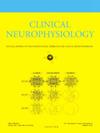Modulation of brain complexity in schizophrenia patients with auditory verbal hallucinations by low-frequency rTMS stimulation
IF 3.7
3区 医学
Q1 CLINICAL NEUROLOGY
引用次数: 0
Abstract
Background
Entropy is a critical measure for assessing the complexity and irregularity of brain signals. Understanding how brain entropy can be influenced by non-invasive neurostimulation in psychiatric patients remains a clinically relevant issue.
Objective
This study aims to explore whether low-frequency repetitive transcranial magnetic stimulation (rTMS) can modulate brain entropy in schizophrenia patient with auditory verbal hallucinations (AVH).
Methods
A case-control design was employed in this study. Low-frequency (1 Hz) rTMS targeting at left temporoparietal junction was administered to schizophrenia patients with AVH. Brain entropy (sample entropy) was calculated from resting-state functional magnetic resonance imaging (fMRI) data. Comparisons of sample entropy were made between the schizophrenia patients and healthy controls, as well as within the patient group pre- and post-rTMS.
Results
Following rTMS treatment, patients showed a reduction in clinical symptoms, including positive symptoms and AVH. Neurocognitive improvements were also observed in domains such as verbal and visual memory. Furthermore, patients exhibited increased sample entropy in regions including the prefrontal cortices and temporal lobes compared to healthy controls. However, this elevated entropy was reduced post-rTMS, particularly in areas associated with AVH. The language network and default model network, initially showing high mean sample entropy, demonstrated a significant decrease after rTMS treatment. These changes in brain entropy were correlated with clinical improvements.
Conclusion
This modulation of neural activity complexity induced by the low-frequency rTMS may underlie the observed clinical and cognitive improvement in schizophrenia.
低频rTMS刺激对伴有言语幻听的精神分裂症患者脑复杂性的调节作用
背景熵是评估大脑信号复杂性和不规则性的关键指标。了解非侵入性神经刺激如何影响精神病患者的脑熵仍然是一个与临床相关的问题。目的探讨低频重复经颅磁刺激(rTMS)对精神分裂症伴听言语幻觉(AVH)患者脑熵的调节作用。方法本研究采用病例对照设计。对伴有AVH的精神分裂症患者进行低频(1hz) rTMS治疗。脑熵(样本熵)由静息状态功能磁共振成像(fMRI)数据计算。比较了精神分裂症患者与健康对照之间的样本熵,以及患者组内rtms前后的样本熵。结果经rTMS治疗后,患者临床症状减轻,包括阳性症状和AVH。在语言和视觉记忆等领域也观察到神经认知方面的改善。此外,与健康对照组相比,患者在包括前额皮质和颞叶在内的区域表现出更高的样本熵。然而,在rtms后,这种升高的熵降低了,特别是在与AVH相关的区域。语言网络和默认模型网络最初表现出较高的平均样本熵,在rTMS处理后表现出显著的下降。这些脑熵的变化与临床改善相关。结论低频rTMS诱导的神经活动复杂性的调节可能是观察到的精神分裂症临床和认知改善的基础。
本文章由计算机程序翻译,如有差异,请以英文原文为准。
求助全文
约1分钟内获得全文
求助全文
来源期刊

Clinical Neurophysiology
医学-临床神经学
CiteScore
8.70
自引率
6.40%
发文量
932
审稿时长
59 days
期刊介绍:
As of January 1999, The journal Electroencephalography and Clinical Neurophysiology, and its two sections Electromyography and Motor Control and Evoked Potentials have amalgamated to become this journal - Clinical Neurophysiology.
Clinical Neurophysiology is the official journal of the International Federation of Clinical Neurophysiology, the Brazilian Society of Clinical Neurophysiology, the Czech Society of Clinical Neurophysiology, the Italian Clinical Neurophysiology Society and the International Society of Intraoperative Neurophysiology.The journal is dedicated to fostering research and disseminating information on all aspects of both normal and abnormal functioning of the nervous system. The key aim of the publication is to disseminate scholarly reports on the pathophysiology underlying diseases of the central and peripheral nervous system of human patients. Clinical trials that use neurophysiological measures to document change are encouraged, as are manuscripts reporting data on integrated neuroimaging of central nervous function including, but not limited to, functional MRI, MEG, EEG, PET and other neuroimaging modalities.
 求助内容:
求助内容: 应助结果提醒方式:
应助结果提醒方式:


